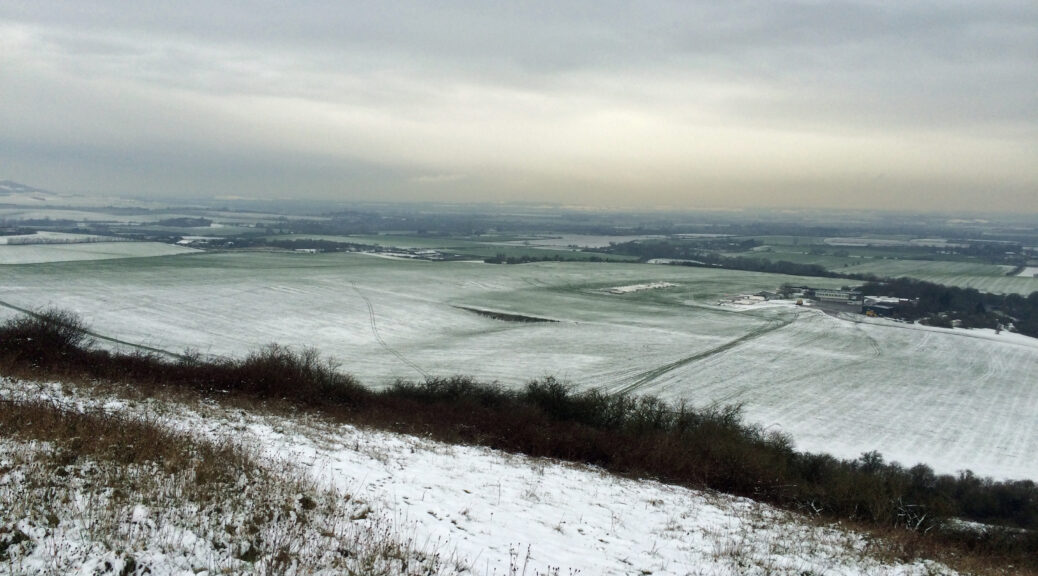I have been very fortunate to have met some great people soaring in England. I’ve had the pleasure of flying with three different clubs. Over a recent long weekend, I had arranged to visit two of those clubs and work on aerobatic flying. My four-day trip did not go exactly as planned, but this is not about that or aerobatics even.
I’ve often admired the English countryside with hedges dividing fields of many different shades of green. This time, the hedges outlined fields of white snow.
The first day at London Gliding Club (LGC) I was found safe to practice solo aerobatics the next day (Note, “safe” is not a synonym for “good” or “proficient.”) When I went to bed, the forecast had potential. When I got up the next morning, the real world had snow!
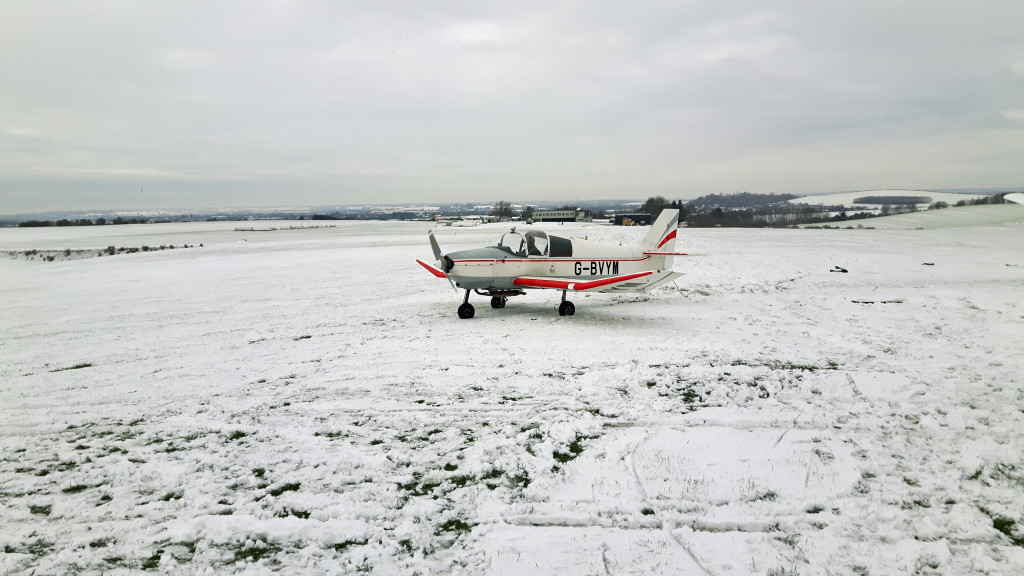
At the glider field I spoke to the tow pilot who told me he was getting freezing mist on the canopy at 4,000 feet. The sky was completely covered, with little to no horizon. It’s hard to do aerobatics in the clouds. No visible horizon doesn’t help either. Aerobatic flying was out, but I heard someone say, “There’s wave over Tring Road.” I know where Tring Road is!
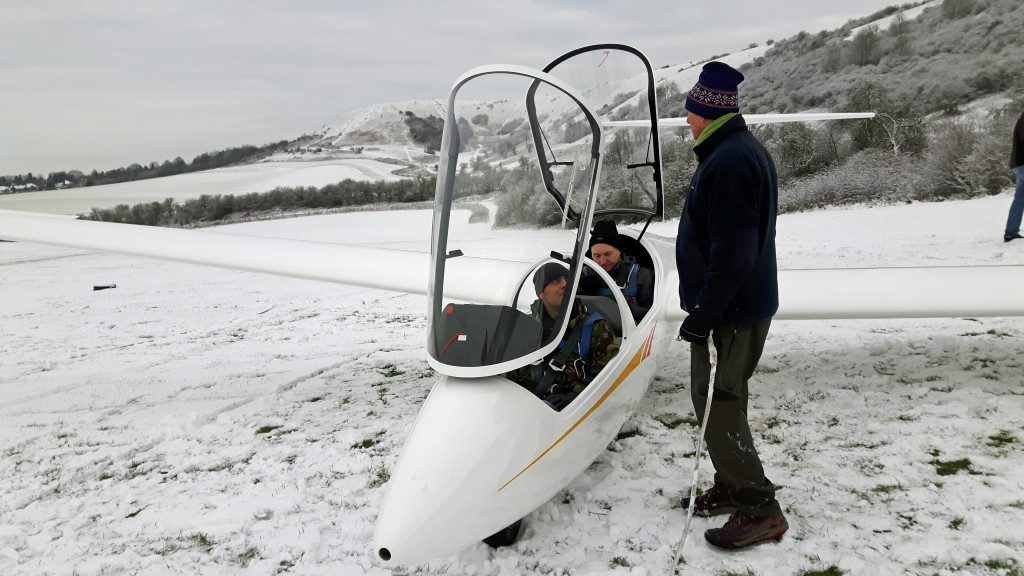
I added myself to the launch queue and waited my turn. I asked instructor Alan Harrison if he would go with me. Even though I had flown the day before, flying with heavy clouds in the air and snow on the ground was something new for me. “New” started with the takeoff’s ground run.
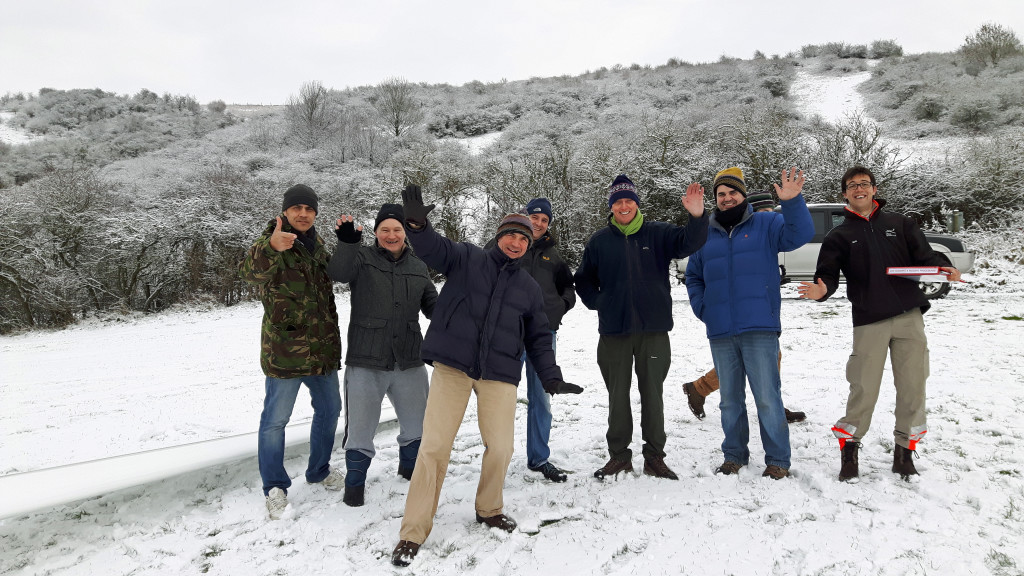
Important background: 1) gliders are normally airborne before the towplane, 2) LGC’s runway is described as “undulating” grass, and 3) any takeoff is longer on snow/mush/etc. The takeoff run at LGC starts down a long slope, does up then down a short slope, then up a longer one. The tow plane rolls over the crest of the middle hump, with me already in the air. I can’t get too high without putting the towplane at risk. He’s rolling down hill as I’m flying up. However (There’s always a “but” or a “however”!) the ground is going up faster than I am. Bump! I’m back on the ground and roll over the hump, back in the air again. This, of course, put a brief, but noticeable load on the tow plane – further lengthening the takeoff run.
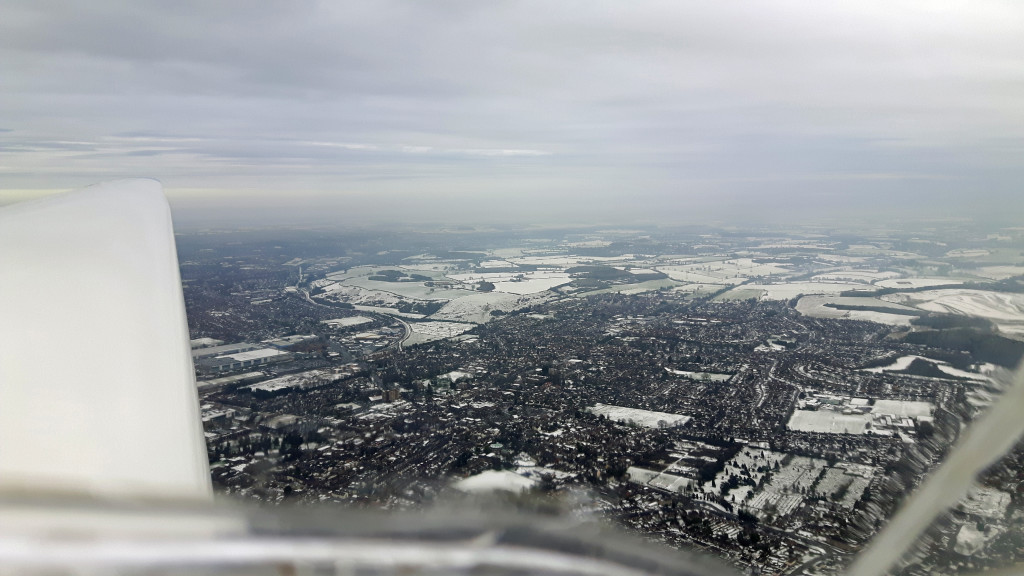
Finally we’re both in the air. Motors and wings perform well in the cold. We climb to 3,000 feet and release in light wave. For the most part, there is only enough energy to reduce sink from a typical 2 knots to about 0.5kts. Even if we’re “only” going down more slowly than usual, that’s a good thing. Woosh! Glider pilots know the feeling of upward acceleration when entering a thermal. Alan and I felt a strong upward shove as we found real lift. We worked hard to keep ourselves well within that lift for several minutes. You already know where this wave was, right? Yes, right over Tring Rd.
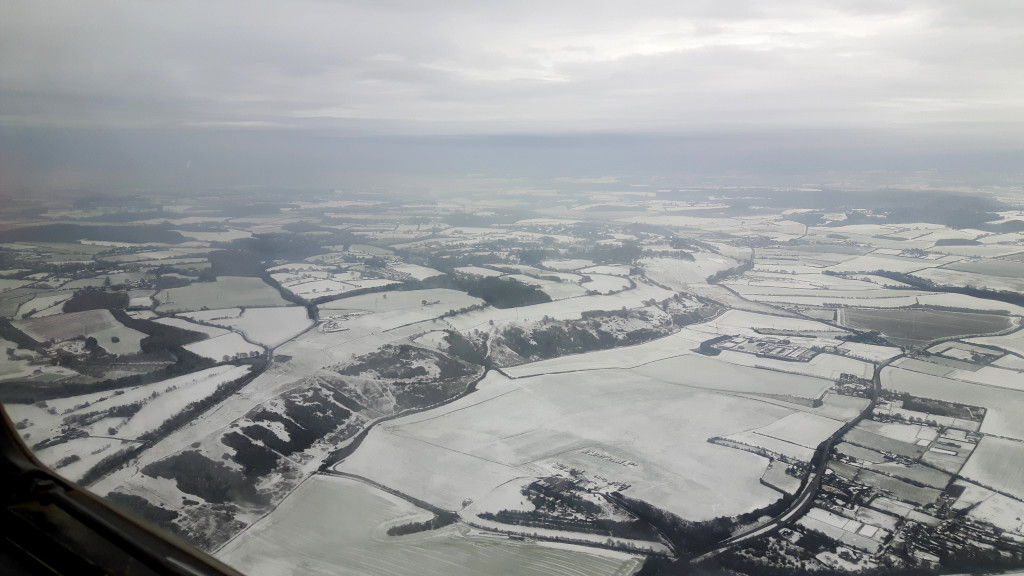
The view from the cockpit was incredible. I’ve often admired the English countryside with hedges dividing fields of many different shades of green. This time, the hedges outlined fields of white snow. And, my iPhone was inaccessible in my pocket. Thankfully, Alan had his phone and took several pictures.
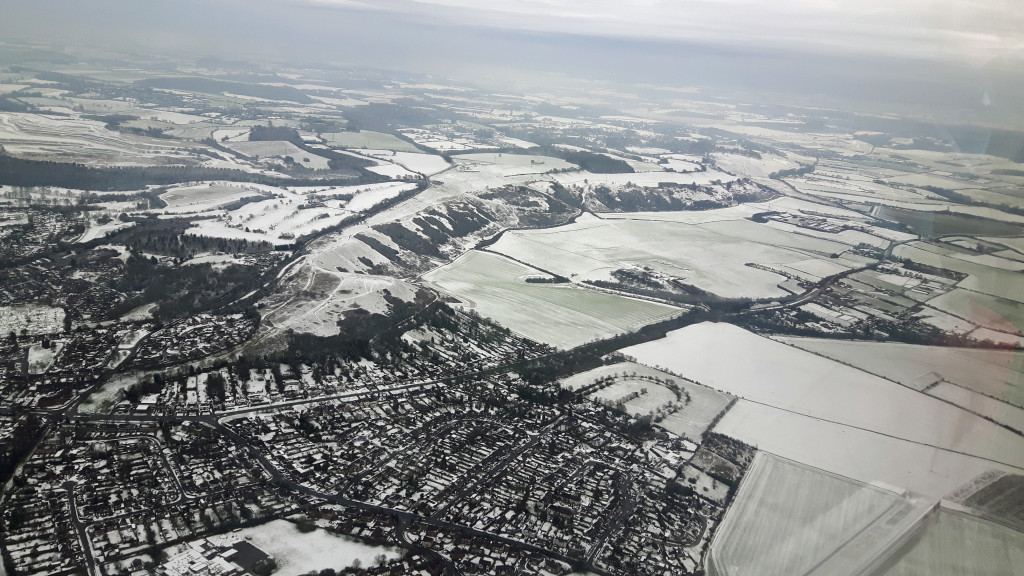
Many thanks to Chief Flight Instructor and manager Andy Roch for hosting me and to the fine instructors who flew with me.
PS The wind came from behind the ridge and down its front. I suspect this was an example of “hydraulic jump” where the wind actually ricochets off the ground and back up. You see this with water flowing over a dam or spillway.
